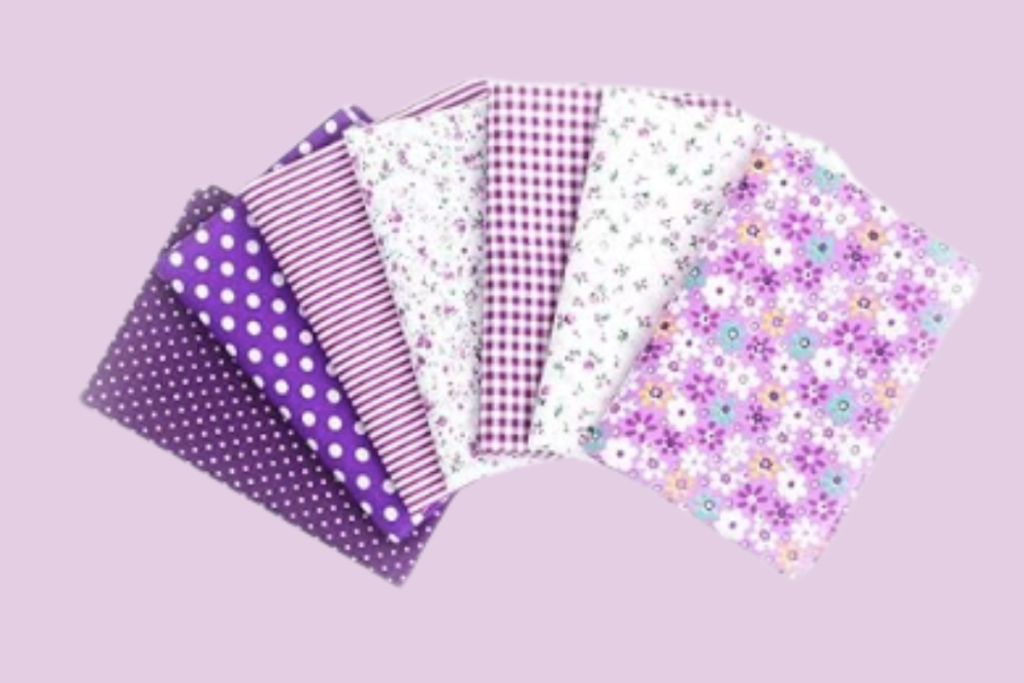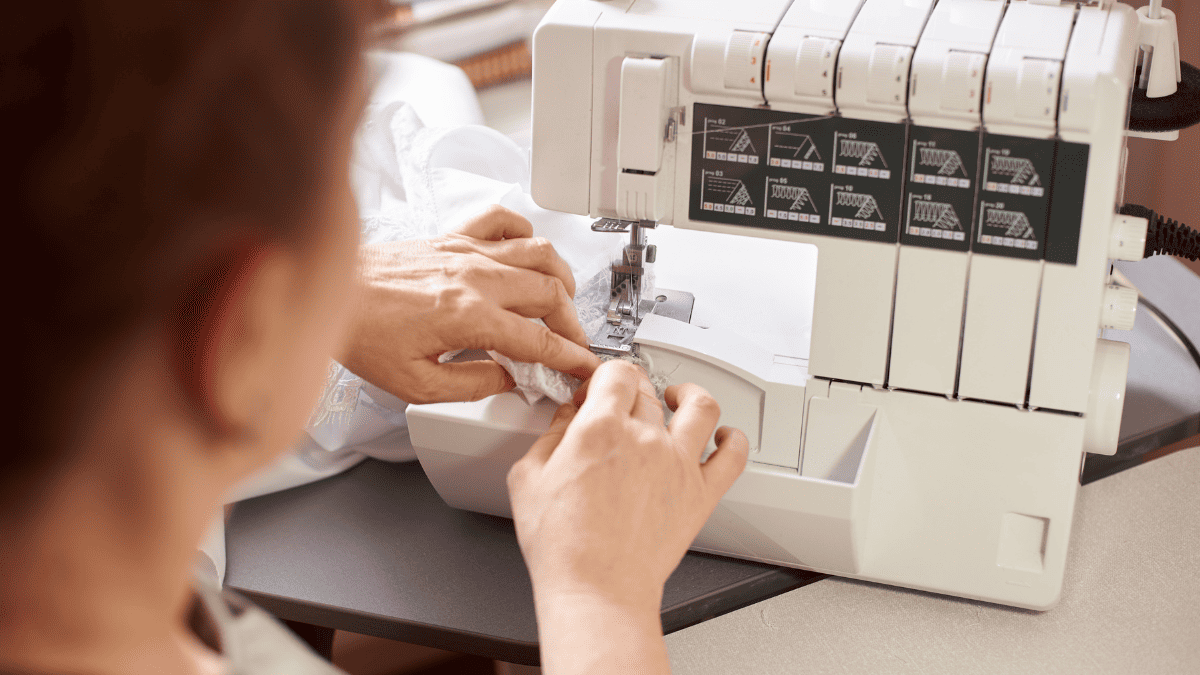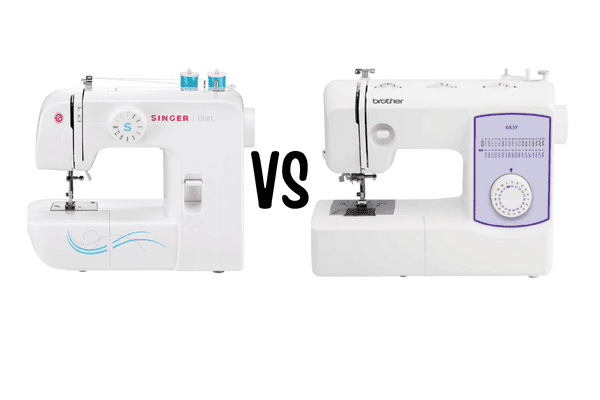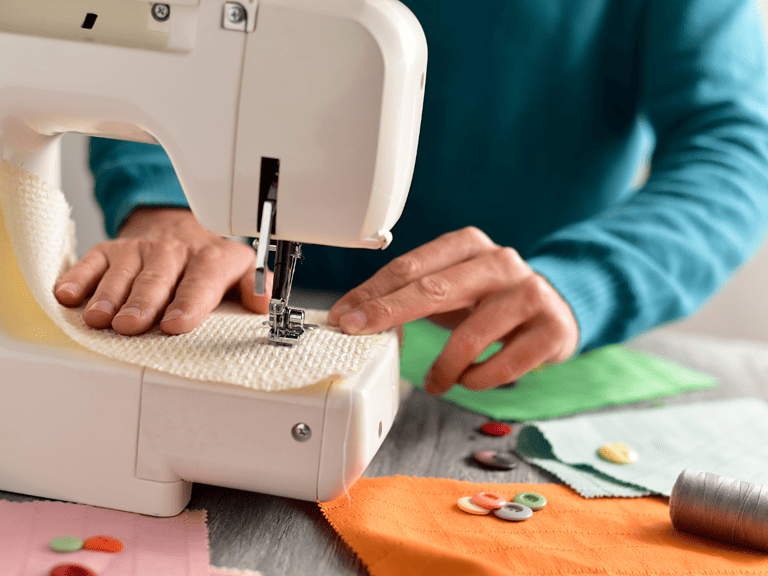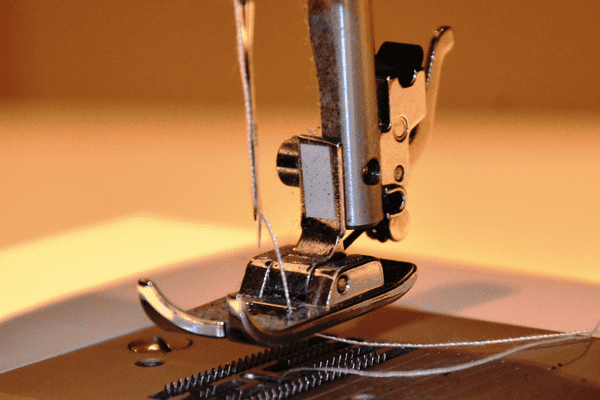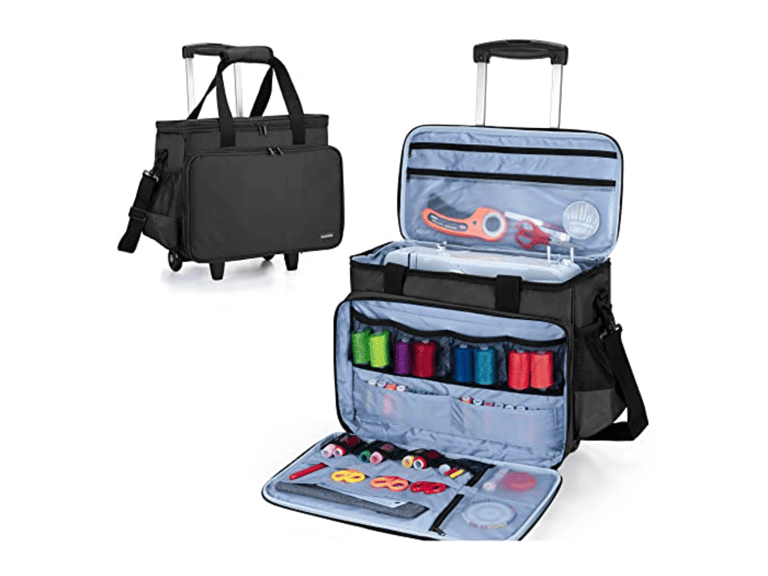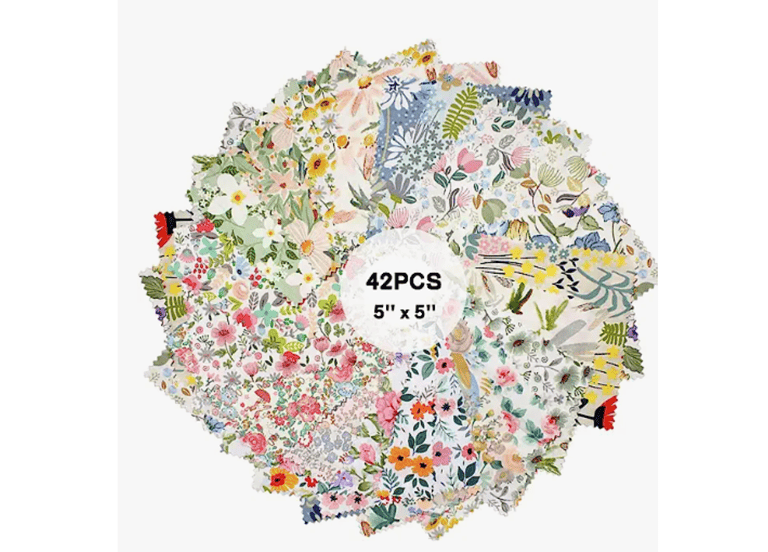4 Best Serger Models For Beginners
When you’re looking to give your sewing projects a professional finish, finding the best serger is a must.
Also known as an overlocker, a serger trims the fabric and encloses the edge within a thread casing all in one step.
The result is a clean, finished seam that looks just as polished on the inside as it does on the outside.
Sergers are great for handling stretchy fabrics and creating durable seams, making them a must-have for anyone serious about sewing.
But with so many models on the market, finding the best serger for your needs can be a bit overwhelming. Don’t worry — you’re not alone in the quest for the perfect stitch.
You want a machine that’s reliable, easy to thread, and versatile enough to handle whatever you throw at it, whether that’s a whisper-thin silk or a tough canvas.
As you embark on this search, consider what projects you’ll use it for, your budget, and how many threads your dream serger uses.
You’ll typically find machines ranging from 2 to 5 threads, offering a variety of stitches like overlock, rolled hem, and coverstitch, to name a few.
But, remember, more isn’t always better; it’s about finding the right fit for your sewing style and needs.
Other key features to consider include adjustable tension, differential feed to prevent stretchy fabrics from getting wavy, and easy color-coded threading guides.
So, grab your fabric swatches, because we’re here to stitch together all the details that will help you find the best serger to take your projects to the next level.
Best Serger Models
| Brand | Model | Price Range | Features |
|---|---|---|---|
| Brother | 1034D | $ | Affordable, User-friendly |
| Brother | ST4041D | $$ | Durable, Advanced features |
| Juki | MO-654DE | $$$ | Heavy-duty, Reliable |
| Juki | MO-1000 | $$$$ | Easy threading, High-end |
Why Choose a Serger Over a Regular Sewing Machine
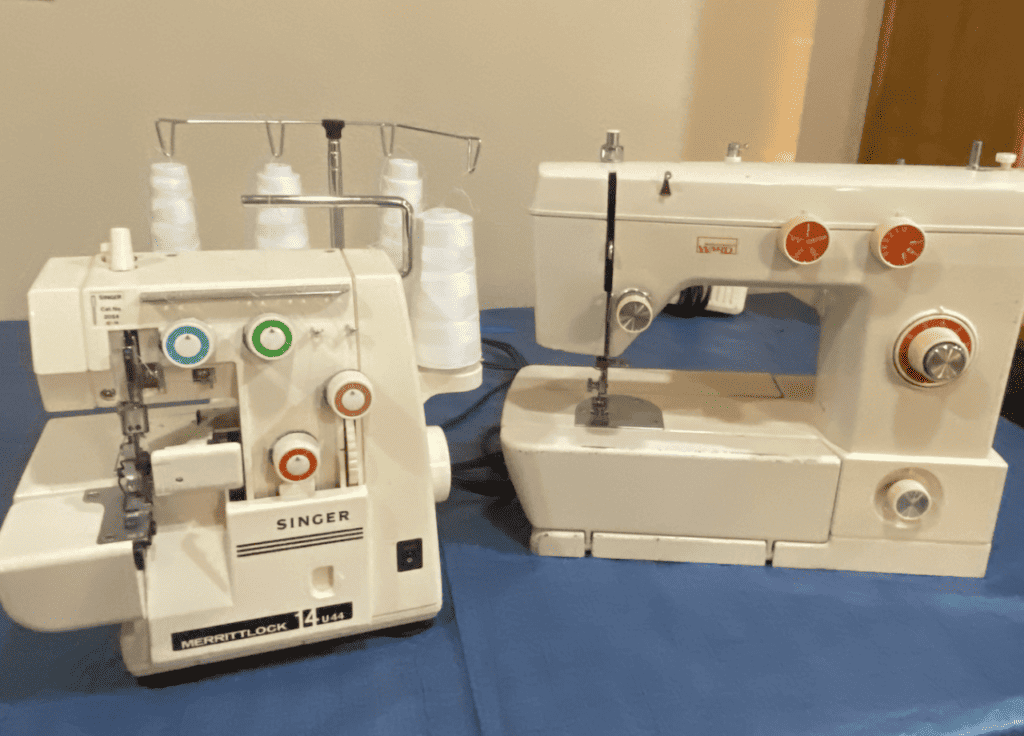
When you’re looking at sprucing up your sewing toolkit, you may wonder why you might go for a serger instead of sticking with a traditional sewing machine.
Here’s the scoop—sergers, also known as overlock machines, are the go-to for creating durable seams and that clean, professional look you see on ready-to-wear clothing.
- Speed: Your serger is like a sports car compared to a regular sewing machine’s family sedan. It’s built for getting the job done fast, sewing anywhere from 1300 to 1500 stitches per minute!
- Stitch Options: A regular sewing machine gives you the basics, but a serger offers a variety of overlock stitches that encase the fabric edge to prevent fraying. This not only looks neat, but it also makes your creations more durable.
- Ease of Use: Don’t be intimidated by its professional appearance. Once you get the hang of threading, many users find their serger easier to use for seams than a traditional machine, especially for stretchy or slippery fabrics.
- Edging and Hemming: With a serger, you get the perfect edge finish, something that can be quite fussy and less neat on a traditional sewing machine.
If you’re hunting for the best serger machine, you’ll want one that offers a blend of user-friendly features, a variety of stitch options, and dependable construction for those durable seams.
Whether you’re a hobbyist who likes quick, clean work or you’re stepping up to more professional-looking results, adding a serger to your workshop just might be your next winning move.
Understanding the Basics of a Serger
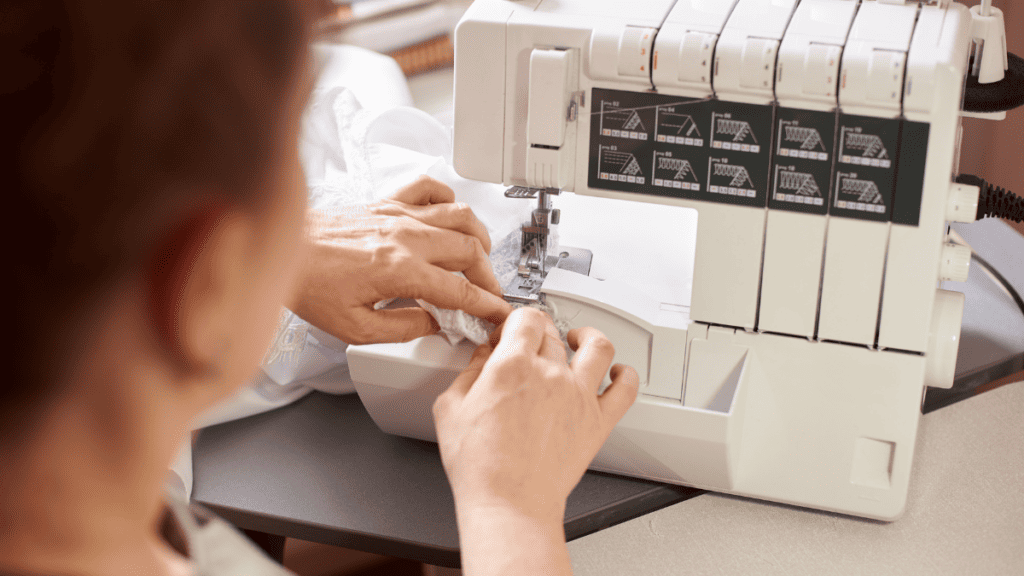
When you dive into the world of serging, you’ll find that these machines can dramatically enhance the quality of your sewing projects with their versatile stitches and finishes.
Types of Sergers
At the heart of it, sergers fall into a few basic categories. You’ve got your four-thread sergers, which are workhorses for general seaming and edging, and then there are cover stitch machines designed mainly for hems and topstitching.
There’s also the hybrid, giving you the best of both worlds with both overlock and cover stitch capabilities.
Each type of serger has its own forte, with the common goal of creating professionally finished edges.
Number of Threads and Their Purpose
Your serger’s threads are like a team of relay runners; each plays a critical role.
Sergers can range from 2 to 8 threads, with increasing number offering more strength and options for stitch types.
For instance, a 2-thread serger is great for a rolled hem or a delicate flatlock seam.
With a four-thread serger, you’re in the territory of strong seams that also overcast the edges.
And when you see one with 5 or more threads, you’re looking at models with all the bells and whistles, capable of producing overlock stitches and a cover stitch.
Understanding Serger Stitches
Stitches crafted by a serger are the unsung heroes of knitwear and stretchy fabrics.
A basic overlock stitch not only finishes the edge but joins seams with a stretchy, fray-preventing stitch.
The rolled hem setting creates a tiny, tight edge ideal for light fabrics.
For joining two pieces with a decorative and flat finish, you’ll use a flatlock seam.
As for a cover stitch, that’s your go-to for professional-looking hems with some stretch to them.
It’s essential to match the right stitch with your thread capability and your fabric for the best finish.
Features to Consider When Shopping for a Serger
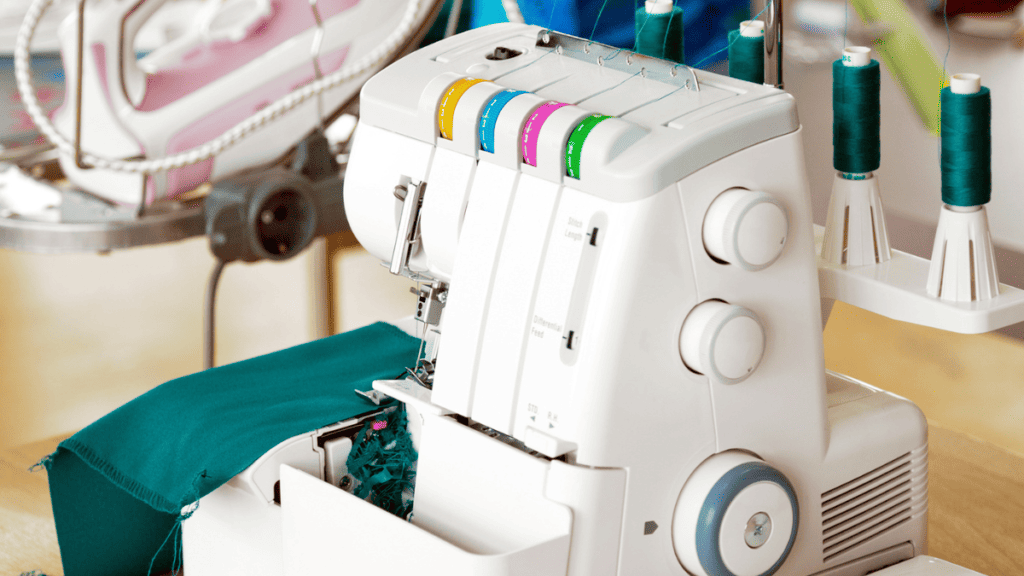
When you’re in the market for a serger, some features can make a world of difference in your sewing experience. From threading systems to the variety of stitches it can handle, pay close attention to these aspects.
Threading System
Threading your serger doesn’t have to be a headache. Look for a model with a color-coded thread guide to simplify the process.
If you want convenience at its best, opt for a serger with air threading – it literally blows the threads through the loopers for you.
Differential Feed
To achieve professional-quality seams on various fabrics, you’ll want a serger with an adjustable differential feed.
This lets you control how the fabric feeds under the presser foot, preventing unwanted stretching or puckering.
Stitch Length and Width Options
Control is key when serging. Go for a machine that allows you to adjust both the stitch length and width to suit your project requirements.
This is especially important if you’re planning to work on diverse projects that require varying stitch sizes.
Adjustable Presser Foot Pressure
An adjustable presser foot pressure ensures that you can handle any fabric type, from silk to denim, without causing damage.
For frequent heavy-duty use, it’s essential to have a presser foot that adapts to the fabric thickness.
Extra Attachments and Accessories
The best sergers come with a range of attachments and accessories that extend the machine’s versatility.
Look for a free arm for serging cuffs and sleeves, and consider the availability of extra presser feet for different stitches and applications.
Top Picks for Best Serger Machines
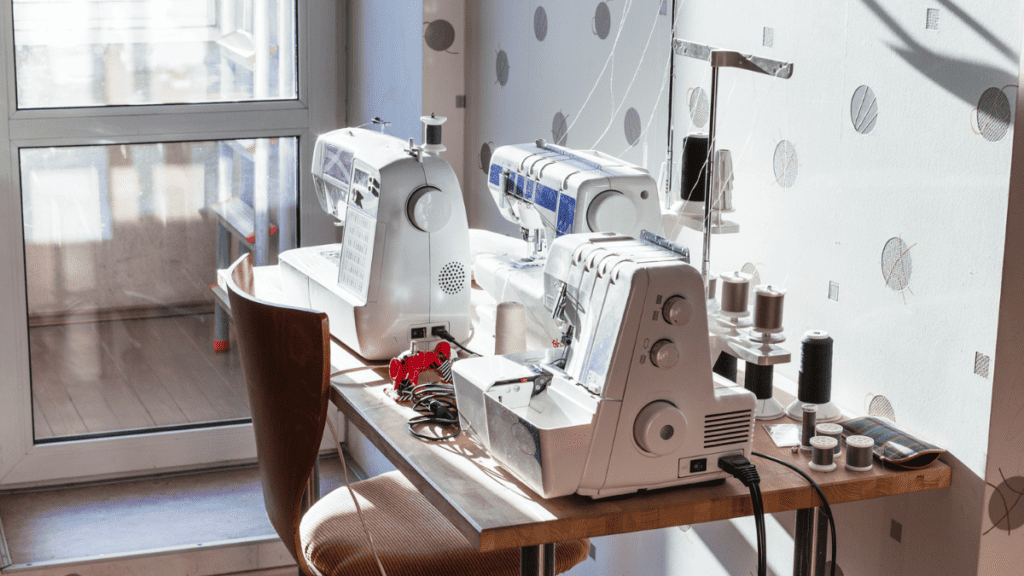
Whether you’re a professional tailor or a DIY enthusiast, finding the serger that fits your projects and pace is crucial. Dive into our top choices, crafted to meet various needs and budgets, from high performance to the most value-packed machines.
High-Performance Sergers for Professionals
If you’re sewing for a living, Juki MO sergers are the workhorses you need.
For example, the Juki MO-6714S is built for heavy use and operates at a high speed, handling different fabrics like a pro.
It offers professional results at a maximum speed of 7000 stitches per minute, making it an excellent choice for those who can’t compromise on efficiency and quality.
Best Sergers for Home Use
For your home projects, the Brother 1034D serger is a great option. It balances features with ease of use, giving you room to experiment and grow.
It can reach up to 1300 stitches per minute, which is fast enough to get through projects with speed while still being manageable for less experienced users.
It’s the right choice for those who want a mix of performance and simplicity.
Budget-Friendly Sergers with Quality Features
When budget is a key factor, you don’t have to sacrifice quality. Look for sergers that hit that sweet spot of low price point without skimping on essential features.
The Brother ST4031HD serger is a standout in this category with its durable metal frame and high-performance blades.
It’s an ideal choice offering solid build quality and a good range of stitch options — all without breaking the bank.
Serging Thick and Stretchy Fabrics
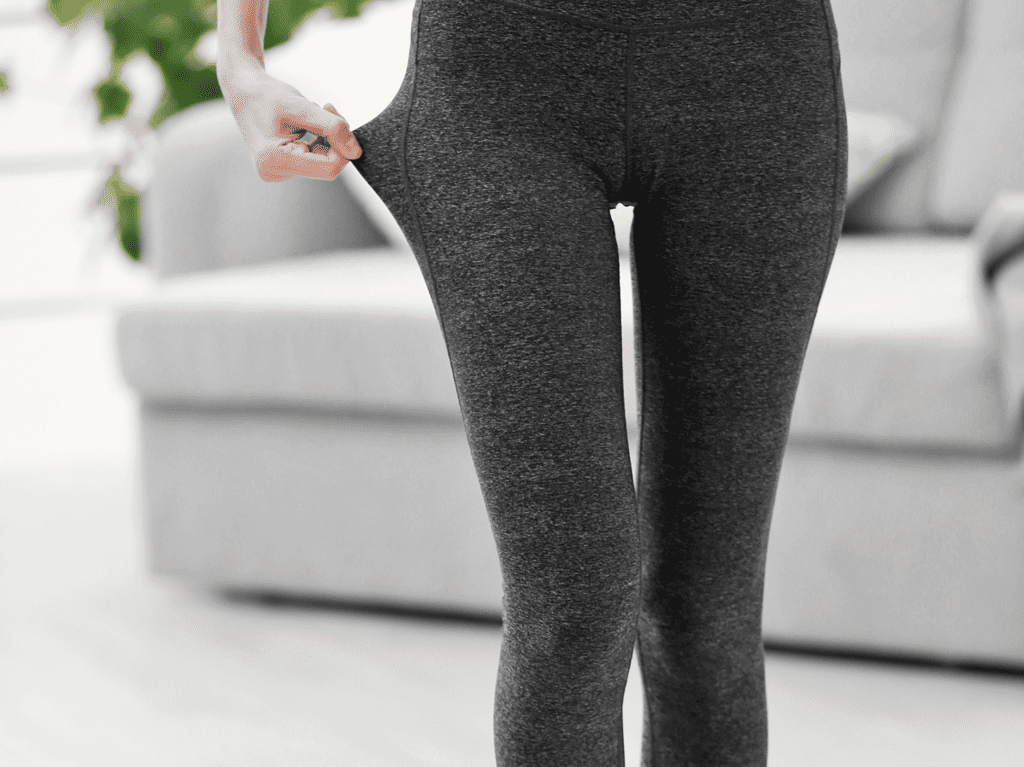
When you’re working with stretchy or thicker fabrics, picking the right serger is key for achieving professional-looking and durable seams.
The secret is finding a machine that can handle the elasticity and bulk without skipping stitches or breaking threads.
Settings:
- Pressure: You’ll need to adjust the presser foot pressure to avoid stretching the fabric as you sew.
- Differential feed: Tweak this setting to prevent unwanted waves and ensure the fabric feeds evenly.
- Stitch length: A longer stitch length can be better for thicker fabrics, preventing them from becoming too rigid.
Needles and Threads:
- Needles: Use needles that are suitable for heavy fabrics, like the Schmetz Stretch or Jersey needles. They make a world of difference.
- Threads: Go for a high-quality polyester thread for stretch and a strong nylon thread for thickness.
Techniques:
- Start with a test piece to get your settings right. It’s your shortcut to serging perfection.
- Keep your fabric flat, but don’t stretch it out as it goes through the machine.
Recommended Sergers:
- Juki MO-2000QVP: This model handles thick layers like a champ and its air threading system saves you from frustration.
- Brother 1034D: A slightly more affordable option that’s still a beast with stretchy materials.
Ease of Use for New and Experienced Sewers
When you’re picking up a new serger, ease of use is a game-changer, especially if you’re fresh to serging or even if you’ve been at it for years.
Starting with threading, which can be the trickiest part, look for a machine with a color-coded threading system.
This feature allows you to quickly identify where each thread should go, saving you from a potential tangle of confusion.
- Threading System: Color-coded for simplicity
- Learning Curve: Smooth transition for newbies
- Manual and Guides: Straightforward instructions
If you want to skip the hassle altogether, some modern machines come with a self-threading serger option.
Literally, at the push of a lever, the loopers can thread themselves, which feels almost magical.
- Automation: Self-threading capabilities
- Quick Changes: Easy to switch threads
Don’t get intimated by the dials and knobs. Your new serger is designed to be user-friendly.
Typically, the tension, length, and width controls are laid out neatly and are tactile enough for you to feel confident adjusting them.
As you grow more accustomed to your serger, these controls encourage experimentation with a wide variety of fabrics and techniques.
- Controls: Intuitive design for easy adjustments
- Versatility: Suitable for different materials
Another thing to consider is how the serger feels during use. A good serger runs smoothly and doesn’t shake unnecessarily—it should stitch with a consistent rhythm that doesn’t threaten to march off the table. This stability is a sign of a well-built machine.
- Machine Stability: Runs smoothly with minimal vibration
The Importance of the Instruction Manual and Support
When you unwrap your new serger, one of your best friends is the instruction manual. This booklet is more than just a guide; it’s the key to unlocking your serger’s full potential.
Flipping through the pages, you’ll find detailed explanations and diagrams showing you how to thread your machine—a task that might seem daunting at first.
- Ease of Use: Manuals often have a Quick Start section, enabling you to get going with just a push of a button.
- Troubleshooting: With a manual handy, common issues during the sewing process can be resolved without a sweat.
- Maintenance: Proper care ensures longevity. Your manual contains maintenance tips to keep your serger in top shape.
The instruction manual is also your gateway to understanding the mechanical warranty that comes with your serger. If something goes haywire, knowing your warranty’s ins and outs can save you time and money.
Support doesn’t stop at the manual. Many manufacturers offer:
- Customer Service: Reach out with questions. A good support team can be invaluable.
- Online Resources: Look for FAQs and forums. Sometimes, the sewing community provides the quickest solutions.
Maintaining Your Serger for Longevity
Regular upkeep is key to keeping your serger performing at its best, especially during heavy use. Let’s break it down into easy steps so you can maintain your serger and ensure it lasts for a long time.
Cleaning: After each project, give your serger a good clean. Use a lint brush to remove any fabric fluff from the looper area.
Keeping vents and moving parts clear of lint supports a smoother operation and prevents overheating.
Cutting Blades: Your blades work hard to give your projects that professional finish. To keep them sharp, wipe them down with a soft, dry cloth. Avoid cutting pins to preserve their sharpness.
Oiling: Lightly oil the mechanisms every few weeks, or more frequently with daily use.
Check your manual for the specific spots that need attention. Proper oiling reduces wear on moving parts and protects your serger’s sturdy metal frame from rust.
Thread Quality: Always opt for high-quality threads, as poor-quality threads can produce more lint and potentially clog your machine.
| Regular Maintenance Checks | Description |
|---|---|
| Tension Adjustment | Ensure balanced stitches. |
| Drive Belts Inspection | Look for signs of wear and adjust tension. |
| Screws Tightening | Prevent vibrations and noise. |
The Evolution and History of Sergers
When you think about sewing machines, you probably imagine the conventional models that are staples in households and tailoring shops.
But if you’re into the nitty-gritty of garment making or you’re a budding fashion designer, you’ve likely crossed paths with the serger. Sergers, also known as overlocker machines, are the specialized siblings in the sewing machine family.
Your typical serger does more than just stitch; it trims the seam and encloses the edge of the fabric inside a thread casing—all in one swoop. Talk about multitasking!
Sergers burst onto the scene in the late 19th century, a good chunk of time after the sewing machine made its debut. The idea was to enable faster, more durable seams, especially for the burgeoning ready-to-wear clothing industry.
| Year | Development |
|---|---|
| 1881 | The first patent that resembles the serger is filed. |
| 1889 | Sergers gain commercial use, especially in the garment industry. |
Initially, these machines were a rarity, found mostly in the industrial settings given their speed and efficiency. However, as the fashion industry flourished and consumers demanded more professionally finished garments, sergers became an essential tool.
Types of Sergers:
- 2-3-4 Thread Sergers: Great for beginners; flexible stitch options.
- 5-Thread Sergers: Professional finish; combines two stitches for strength.
- Coverstitch Sergers: Often used for hems and topstitching; leaves a clean finish.
Throughout the years, the functionality of sergers expanded, growing from the simple chain stitch machines to complex systems capable of handling multiple threads and various stitch types.
Despite all the tech advancements, the core use of sergers as a robust tool for edging and seaming has stayed the same—proving that some things just don’t go out of style.
Fabric Giveaway
Enter our monthly fabric giveaway. Simply complete the tasks daily and you will be entered into the drawing. Winner will be randomly drawn on the first day of the month and notified via email
